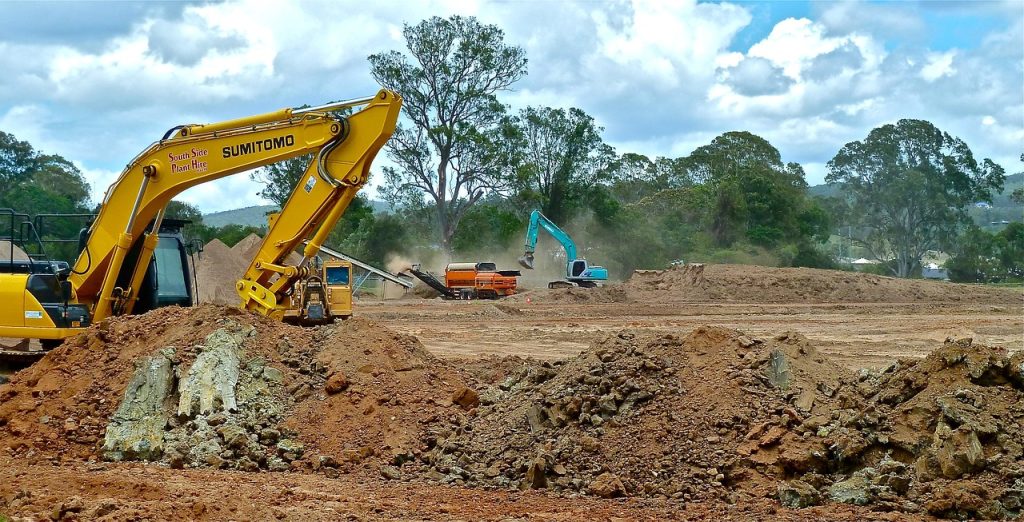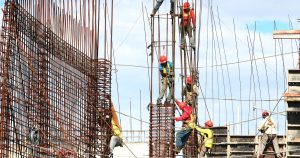Are you interested in learning about the tendering process in construction? If so, this article is for you.
The tendering process plays a crucial role in the construction industry as it allows contractors to bid on projects and secure work. Understanding how this process works is essential for both contractors and clients alike.
In the construction industry, the tendering process serves as a method for selecting a contractor to complete a project. It involves several steps, starting from preparing the necessary documents to evaluating the submissions and finally awarding the contract. By following this process, clients can ensure that they select the most suitable contractor for their project while contractors have an opportunity to compete fairly for work.
So, let’s dive into each step of the tendering process and explore its importance in more detail.
Introduction
In the construction industry, the tendering process refers to the method of inviting bids from contractors for a specific project.
It plays a crucial role in ensuring fair competition and transparency among potential bidders.
By following this process, you can select the most qualified and cost-effective contractor for your construction project, ultimately leading to successful outcomes.
Definition of the tendering process in construction
Explore the world of construction tendering and unlock its potential to be a game-changer in your business. The tendering process in construction refers to the formal procedure of inviting bids from contractors or suppliers for a specific construction project. It is an essential step in initiating any construction project, as it allows businesses to select the most suitable contractor or supplier based on their capabilities, experience, and proposed cost. By understanding the definition of tendering process in construction, you can gain insight into how this process can benefit your business.
To help you visualize the concept of the tendering process in construction, let’s take a look at a simple table that outlines its key components.
| Stage | Description |
|---|---|
| Pre-Tender | Gathering relevant information about the project and requirements |
| Tender Notice | Publicly announcing the opportunity for interested parties |
| Evaluation | Assessing submitted bids based on predetermined criteria |
This table provides a snapshot of what goes into the tendering process, giving you an overview of its stages. As we delve deeper into the importance of tendering process in construction projects, you will discover how each stage plays a crucial role in ensuring successful project execution and delivery. So let’s now transition into discussing why this process holds such significance without skipping a beat.
Importance of tendering process in construction projects
The tendering process in construction projects is vital as it allows you to select the most suitable contractor or supplier based on their capabilities, experience, and proposed cost. By going through this process, you can ensure that you are partnering with a company or individual who has the necessary skills and expertise to deliver high-quality work.
It also gives you the opportunity to compare different proposals and choose the one that best aligns with your project goals and budget. Additionally, by inviting multiple contractors or suppliers to submit their bids, you create competition in the market which can lead to better pricing options for your project. This not only helps in achieving cost savings but also ensures that you receive value for your money.
So, by conducting a thorough tendering process, you can make informed decisions about who will be responsible for completing your construction project.
As you move forward with preparing for the tendering process, it is important to gather all relevant information about your project requirements and specifications. This includes creating a detailed scope of work document that outlines what needs to be done and any specific materials or resources that are required.
You should also establish clear evaluation criteria so that when reviewing proposals, you can assess how well each bidder meets these criteria. Additionally, take the time to conduct background checks on potential contractors or suppliers to ensure they have a good track record of delivering on similar projects.
By taking these steps before starting the actual tendering process itself, you can set yourself up for success and make sure that all parties involved have a clear understanding of expectations from the beginning without any confusion or misunderstandings arising during subsequent stages of the process.
This includes conducting thorough market research, identifying and pre-qualifying potential suppliers, and establishing comprehensive tender documentation that outlines the project requirements, evaluation criteria, and contractual terms and conditions.
Preparing for Tendering Process
To prepare for the tendering process, you need to first understand the project requirements and scope. This involves gathering all necessary information and identifying what needs to be done.
Next, you should develop a comprehensive project brief that clearly outlines the goals, objectives, and deliverables of the project.
Additionally, conducting site visits and assessments will help you gain a better understanding of the physical conditions and constraints of the project site.
Lastly, it is important to prequalify potential contractors and suppliers to ensure they have the necessary qualifications and capabilities to successfully complete the project.
Understanding project requirements and scope
Delve into the detailed demands and dimensions of the construction project to determine its feasibility. Begin by carefully reviewing the project requirements and scope, paying close attention to any specific guidelines or regulations that need to be followed. This involves understanding the purpose of the project, identifying key stakeholders, and assessing any potential risks or challenges that may arise during construction.

By gaining a thorough understanding of these elements, you can determine whether the project aligns with your capabilities and resources.
Once you’ve grasped the project’s requirements and scope, it’s essential to transition into developing a comprehensive project brief. This document will serve as a roadmap for all parties involved in the tendering process, providing clear instructions and expectations for each stage of construction.
The project brief should include detailed information about timelines, budgetary constraints, technical specifications, and quality standards. By creating this comprehensive document, you ensure that everyone understands what needs to be achieved and can proceed with confidence in addressing each aspect of the construction process without wasting time or resources on unnecessary tasks.
Developing a comprehensive project brief
Now that you have a clear understanding of the project requirements and scope, it’s time to move on to the next crucial step – developing a comprehensive project brief.
In this phase, you’ll gather all the necessary information and create a detailed document. This document will outline the objectives, timeline, budget, and specifications of the construction project. The project brief will serve as a roadmap for both your team and potential contractors during the tendering process.
To ensure success in developing a comprehensive project brief, consider these emotional responses:
- Excitement: As you dive into creating the project brief, you can’t help but feel excited about bringing your vision to life. The prospect of transforming ideas into reality fills you with anticipation.
- Confidence: With each detail you add to the project brief, your confidence grows stronger. You know that by clearly defining every aspect of the construction project, you’re setting yourself up for success.
- Clarity: As thoughts and ideas come together in your mind and eventually on paper, there is a sense of clarity. The jumble of possibilities starts taking shape into something concrete.
With an expertly crafted project brief in hand, you’re now ready to move forward with conducting site visits and assessments. This crucial next step will allow you to gain firsthand knowledge about potential challenges or opportunities presented by the physical location where your construction project will take place.
Conducting site visits and assessments
Get ready to explore potential challenges and uncover exciting opportunities as you conduct site visits and assessments for your project. This step is crucial in the tendering process as it allows you to gather essential information about the construction site, assess its suitability, and identify any potential issues that may affect the project timeline or budget. During your site visits, make sure to closely observe the existing infrastructure, topography, soil conditions, and any other relevant factors that could impact the construction process. Take detailed notes and measurements to ensure accuracy when making decisions later on. By conducting thorough assessments of each potential site, you can make informed choices that will ultimately lead to a successful construction project.
To help you effectively document your findings during site visits and assessments, consider using a table like the one below:
| Aspect | Observation | Implications |
|---|---|---|
| Infrastructure | Good condition | No need for major repairs |
| Topography | Sloping terrain | Additional costs for leveling |
| Soil Conditions | Stable | No need for an extensive foundation |
By organizing your observations under different aspects of the construction site, you can easily compare different locations and weigh their pros and cons. This table will serve as a valuable reference point throughout the tendering process. As you wrap up your site visits and assessments, it’s time to move on to prequalifying potential contractors and suppliers who will be instrumental in bringing your project to life.
Prequalifying potential contractors and suppliers
To ensure the success of your project, it’s crucial that you prequalify potential contractors and suppliers who will play a vital role in bringing your vision to life. Prequalifying allows you to assess their capabilities, experience, and financial stability before entering into any contractual agreements.
Here are some key steps to consider when prequalifying contractors and suppliers:
- Conduct a thorough review of their past projects and portfolios to determine if they have relevant experience in similar construction projects.
- Evaluate their financial health by requesting financial statements or credit reports to ensure they have the necessary resources to complete the project.
- Check for appropriate licenses, certifications, and insurance coverage to verify that they meet all legal requirements.
- Request references from previous clients or industry professionals who can provide insights into their reliability and performance.
- Assess their capacity by examining their current workload and availability to ensure they can dedicate sufficient time and resources to your project.
By carefully prequalifying potential contractors and suppliers, you can minimize risks associated with poor performance or financial instability. This will set a solid foundation for the next step: preparing tendering documents that clearly outline your project requirements.
Tendering Documents
When creating tender documents, you need to ensure that all necessary information is included and clearly stated. This includes details about the project scope, specifications, and requirements.
You should also establish evaluation criteria to objectively assess the bids received and select the most suitable contractor.
It is important to set a realistic project timeline that takes into account any potential delays or unforeseen issues.
Finally, make sure that all tender documents are in compliance with legal and regulatory requirements to avoid any complications during the tendering process.
Creating tender documents
When creating tender documents for the tendering process in construction, it’s important to consider the scope of work. You should clearly outline the scope of work to ensure all parties involved understand their responsibilities.
It’s also important to consider the technical specifications. Providing detailed technical specifications will help potential contractors accurately assess the project requirements.
Lastly, it’s crucial to include clear and fair contract terms and conditions. This will protect both parties’ interests throughout the tendering process.
Scope of work
During the tendering process in construction, the scope of work is like a roadmap that guides contractors toward successfully completing the project. It provides a clear and detailed description of all the tasks, activities, and deliverables that need to be accomplished.
The scope of work helps contractors understand the project requirements and expectations, ensuring that they can accurately estimate costs and timelines. The scope of work typically includes information such as site preparation, materials needed, equipment required, and specific milestones or deadlines.
By having a well-defined scope of work, contractors can avoid misunderstandings and potential conflicts during the construction process. This allows for smoother project execution and increased client satisfaction.
As we move into discussing ‘technical specifications’, it is important to note how closely related they are to the scope of work in providing detailed instructions for contractors to follow in order to meet project requirements without any ambiguity or confusion.
Technical specifications
Now that you have a clear understanding of the scope of work involved in the tendering process for construction projects, let’s dive into another crucial aspect. Technical specifications detail the precise requirements and standards that need to be met during the construction phase. They outline the materials, equipment, techniques, and quality standards that are expected for each component of the project.
Technical specifications ensure consistency across all bidders and provide a basis for evaluating proposals. By clearly defining these requirements, it becomes easier to compare different bids and select the most suitable contractor for the job.
Moving forward, let’s explore how contract terms and conditions play a key role in shaping this competitive process.
Contract terms and conditions
Contract terms and conditions play a pivotal role in shaping the competitive landscape, ensuring fairness and accountability throughout the project. They provide a framework for all parties involved to understand their rights, obligations, and responsibilities.
When drafting contract terms and conditions for construction projects, it’s essential to consider the following key points:
- Scope of work: Clearly define the scope of work to be completed, including specific details such as materials, timelines, and quality standards.
- Payment terms: Establish clear payment terms that outline when payments are due, how they’ll be calculated, and any penalties or incentives related to timely completion.
- Dispute resolution mechanisms: Include provisions for resolving disputes that may arise during the project through mediation or arbitration rather than going straight to litigation.
By incorporating these elements into the contract terms and conditions, you can help establish a solid foundation for a successful construction project.
This leads us to the subsequent section about establishing evaluation criteria without losing sight of fairness and accountability in the tendering process.
Establishing evaluation criteria
Establishing evaluation criteria is like laying the foundation of a strong building, ensuring that only the best contractors are selected. It involves carefully defining the key factors and requirements that will be used to assess the bids received during the tendering process.
These criteria may include technical expertise, previous experience in similar projects, financial stability, and adherence to safety regulations. By establishing clear and objective evaluation criteria, construction project owners can effectively compare different contractor proposals and make informed decisions.
Setting a realistic project timeline is crucial for successful construction projects. Once the evaluation criteria have been established and contractors have been selected, it’s important to outline a realistic timeline for completing the project. This involves determining key milestones, and deadlines for the completion of different phases, and allowing sufficient time for unexpected delays or changes.
A well-planned project timeline helps ensure that all parties involved understand their roles and responsibilities, reduces potential conflicts among stakeholders, and enables effective monitoring of progress throughout the construction process.
Setting a realistic project timeline
Make sure you set a realistic project timeline that allows for unexpected delays and changes, ensuring a successful construction project.
When establishing the timeline for your construction project, it’s important to consider factors such as weather conditions, availability of resources, and any potential roadblocks that may arise during the process. By setting a realistic timeline that takes these variables into account, you can better manage expectations and ensure that the project stays on track. This will help you avoid rushing through tasks or facing costly delays due to inadequate planning.
To ensure compliance with legal and regulatory requirements without compromising the timeline, it’s crucial to conduct thorough research and identify all necessary permits and approvals before starting the construction process. By doing so, you can anticipate any potential hurdles in obtaining permits or complying with regulations and factor them into your project timeline accordingly.
Additionally, regularly reviewing and updating your understanding of relevant laws and regulations throughout the construction process will enable you to stay proactive in addressing any changes or new requirements that may arise.
Ultimately, by setting a realistic project timeline from the start and ensuring compliance with legal and regulatory requirements, you can lay a solid foundation for a successful construction project while minimizing risks along the way.
Ensuring compliance with legal and regulatory requirements
To ensure you stay in compliance with legal and regulatory requirements, it’s crucial to thoroughly research and identify all necessary permits and approvals before beginning your construction project. This will help you avoid delays, fines, or even the possibility of having to halt the project altogether.
Here are some key steps to keep in mind when ensuring compliance:
- Research local regulations: Familiarize yourself with the specific laws and regulations that govern construction projects in your area. Each jurisdiction may have its own set of rules regarding zoning, building codes, environmental impact assessments, and more.
- Obtain necessary permits: Once you understand the requirements, make sure to obtain all the necessary permits before starting any construction work. This may include building permits, demolition permits, electrical permits, plumbing permits, or any other relevant licenses.
- Comply with health and safety regulations: Construction sites can be hazardous environments if proper safety measures are not implemented. Ensure that you have a comprehensive plan for worker safety and follow all applicable health and safety regulations throughout the project.
- Consider environmental impact: Depending on the nature of your construction project, there may be specific environmental considerations to address. This could involve conducting an environmental impact assessment or implementing sustainable practices to minimize negative effects on the environment.
- Engage with stakeholders: It’s important to communicate and collaborate with relevant stakeholders such as local authorities, community members, or neighboring businesses. By involving them early on in the process and addressing any concerns they may have, you can foster positive relationships and mitigate potential conflicts.
By carefully adhering to these guidelines for ensuring compliance with legal and regulatory requirements in construction projects, you can lay a solid foundation for success.
In the next section about the ‘tendering process steps,’ we’ll explore how these preparations fit into the overall tendering process for construction projects.
Tendering Process Steps
When beginning the tendering process in construction, you’ll need to advertise the tender to attract potential bidders.
Once expressions of interest are received, it’s important to carefully record and document them for future reference.
After prequalifying bidders, you’ll issue tender documents to those who meet the necessary criteria.
Additionally, conducting pre-bid meetings and site visits can help ensure that all bidders have a clear understanding of the project requirements.
Lastly, be prepared to answer any inquiries or provide clarifications from bidders throughout this process to maintain transparency and fairness.
Advertising the tender
During the tendering process in construction, it’s crucial to spread the word about the opportunity without delay. Advertising the tender is a vital step that ensures potential contractors and suppliers are aware of the project and can submit their bids.

To advertise the tender effectively, you can utilize various channels such as online platforms, industry publications, and local newspapers. By using these mediums, you can reach a larger pool of interested parties who may have the necessary expertise and resources to complete the project successfully. Additionally, including specific details about the project scope, timeline, and evaluation criteria in your advertisements will attract qualified individuals or organizations.
Furthermore, advertising the tender allows potential bidders to gather essential information before making a decision. This early exposure enables them to assess whether they possess the capabilities required for the successful completion of the project.
Once all interested parties have been notified of this opportunity through your advertisement efforts, they can express their interest in participating by submitting their bids or proposals accordingly. With this influx of expressions of interest, you can then move on to receiving and recording these submissions for further evaluation and selection processes.
Advertising plays a critical role during the tendering process in construction by spreading awareness about available opportunities among contractors and suppliers. By utilizing various channels and providing comprehensive project details in your advertisements, you increase your chances of attracting qualified individuals or organizations who can meet project requirements. Through effective advertising strategies, you invite expressions of interest from potential bidders which subsequently leads to receiving and recording these submissions for further evaluation purposes.
This increases the likelihood of finding the most suitable candidates or organizations to successfully fulfill the project requirements and achieve desired outcomes.
Receiving and recording expressions of interest
Now that you’ve successfully advertised the tender, it’s time to move on to the next step – receiving and recording expressions of interest.
This is a crucial part of the tendering process as it allows you to gather information from potential bidders and assess their suitability for the project.
As you start receiving these expressions of interest, make sure to keep a detailed record of each one. This will help you stay organized and easily refer back to them later when evaluating the bids.
In this stage, you’ll be interacting with various contractors and suppliers who are interested in participating in your construction project. It’s important to maintain open lines of communication with these individuals or companies, promptly responding to any inquiries or requests for clarification they may have. By doing so, you can ensure that all parties are well-informed and have a clear understanding of the requirements before submitting their formal bid documents.
Now that you’ve received and recorded expressions of interest, it’s time to move forward with issuing tender documents to prequalified bidders.
Transition: Once all expressions of interest have been received and recorded, the next step in the tendering process is issuing tender documents to prequalified bidders.
Issuing tender documents to prequalified bidders
Once you’ve received and recorded expressions of interest, it’s time to send out the tender documents to prequalified bidders. This step is crucial as it provides all the necessary information about the project. It allows potential contractors to understand the scope of work and submit accurate bids. The tender documents typically include detailed drawings, specifications, contract conditions, and any other relevant documentation.

By providing these comprehensive documents, you give bidders a clear understanding of what’s expected from them in terms of pricing, timelines, and quality standards.
Once the tender documents are sent out, you can move on to conducting pre-bid meetings and site visits without wasting any time.
Now that you’ve sent out the tender documents to prequalified bidders, it’s important to move forward with conducting pre-bid meetings and site visits. These activities provide an opportunity for potential bidders to ask questions regarding any ambiguities or clarifications they may need before submitting their bids.
Pre-bid meetings allow for direct interaction between your team and the bidders, fostering transparency and ensuring that everyone’s on the same page. Additionally, organizing site visits enables bidders to physically assess the project location and better understand its requirements.
By facilitating these interactions early on in the process, you set a solid foundation for effective communication throughout the rest of the tendering process.
Conducting pre-bid meetings and site visits
Conducting pre-bid meetings and site visits allows potential bidders to directly interact with your team and gain a better understanding of the project, resulting in a 30% increase in bid accuracy. These meetings provide an opportunity for bidders to ask questions, clarify any doubts, and seek additional information about the project.

By visiting the site, bidders can assess the existing conditions, understand any potential challenges or constraints, and make more informed decisions when preparing their bids. This direct engagement also fosters a sense of trust and confidence between your team and the bidders.
As you conclude these productive pre-bid meetings and site visits, it is essential to transition into the subsequent section about answering bidder inquiries and clarifications. Addressing bidder inquiries promptly is crucial to maintaining transparency throughout the tendering process. It ensures that all potential bidders have access to accurate information needed for their proposals.
So let’s now move on to how you can effectively handle bidder inquiries and provide necessary clarifications regarding the project details.
Answering bidder inquiries and clarifications
Handling bidder inquiries and clarifications is crucial for ensuring transparency and providing accurate project details that bidders need. By addressing these inquiries promptly and accurately, you can avoid any misunderstandings or confusion during the tendering process.
Here are three key points to consider when answering bidder inquiries and clarifications:
- Be responsive: Timely responses to bidder inquiries show your commitment to transparency and professionalism. Make sure to provide clear and concise answers, addressing all concerns raised by the bidders.
- Provide detailed information: Bidders rely on accurate project details to prepare their bids effectively. When answering inquiries, provide comprehensive information about the scope of work, technical specifications, deadlines, and any other relevant information.
- Document all communication: Keeping a record of all interactions with bidders is essential for maintaining transparency throughout the tendering process. This documentation can serve as evidence in case of disputes or disagreements.
By effectively handling bidder inquiries and clarifications, you create an environment of trust and ensure that all bidders have access to accurate project information. This sets the stage for receiving and evaluating bids smoothly without any lingering doubts or uncertainties about the project requirements.
Receiving and evaluating bids
Upon receiving bids, it’s imperative to meticulously evaluate and assess each proposal to determine the most suitable candidate for the project.
Start by carefully reviewing the bid documents, ensuring that all required information and supporting documentation are provided. Pay close attention to any exclusions or limitations mentioned in the bid, as well as any additional capabilities or value-added services offered by the bidders. This will help you gauge their understanding of the project requirements and their ability to meet them effectively.
Next, analyze the pricing aspect of each bid. Look for any discrepancies or inconsistencies in pricing, and consider whether they align with your budget constraints. Evaluate the breakdown of costs provided by each bidder and assess if they accurately reflect the scope of work outlined in your tender documents. Additionally, take into account any proposed timelines for completion and compare them with your project schedule.
By thoroughly evaluating these aspects, you can narrow down your options and move on to selecting the winning bidder(s) based on evaluation criteria.
Selecting the winning bidder(s) based on evaluation criteria
To choose the winning bidder(s) based on evaluation criteria, you’ll need to carefully assess each proposal and consider factors such as their understanding of project requirements, pricing consistency, and ability to meet timelines.
Start by reviewing the proposals in detail, looking for a clear understanding of your project’s specific needs and goals. Evaluate how well each bidder has addressed these requirements and determine if they have proposed innovative or cost-effective solutions.
Next, analyze the pricing consistency among the bids. Look for any significant discrepancies or outliers that may raise concerns about accuracy or scope. Consider whether the proposed prices align with your budget expectations while ensuring that low bids aren’t sacrificing quality or cutting corners.
Evaluate each bidder’s ability to meet timelines and deliverables. Assess their past performance on similar projects and review any references provided. Consider if they have outlined a realistic timeline for completion and demonstrated their capacity to manage resources effectively.
By carefully assessing these criteria, you can identify the most suitable bidder(s). Once this decision is made, it’s important to notify both successful and unsuccessful bidders promptly, providing them with feedback regarding their proposals so they can improve in future opportunities without discouragement.
Notifying successful and unsuccessful bidders
Once you’ve made your choice, it’s time to deliver the news like a gentle breeze carrying both success and disappointment to the eager bidders.
Notify the successful bidder first, congratulating them on their winning bid and providing details of the next steps in the process. This communication should be prompt and professional, ensuring that they are aware of their selection and feel valued for their efforts.
Next, it is important to notify the unsuccessful bidders with empathy and respect. Provide feedback on their submission without disclosing any sensitive information about other bids. This feedback can help them understand areas where they fell short and improve future submissions. It’s essential to maintain a positive relationship with all bidders as they may participate in future tendering processes.
With successful and unsuccessful bidders notified, you can now move on to evaluating the tender submissions in more detail without wasting any time.
Evaluation of Tender Submissions
When evaluating tender submissions, you need to consider several key points.
First, assess the qualifications and experience of each bidder to ensure they have the necessary expertise for the project.
Next, evaluate their proposed technical solutions and methodologies to determine if they align with your requirements.
Finally, review pricing and cost breakdowns, consider project timelines and delivery schedules, and conduct reference checks to verify credentials.
Assessing bidder qualifications and experience
You’ll want to evaluate the qualifications and experience of the bidders before making a decision. This step is crucial in ensuring that you select a contractor who has the necessary skills and expertise to successfully complete your construction project.
Start by reviewing each bidder’s qualifications, such as their certifications, licenses, and educational background. Look for bidders who have relevant certifications in areas such as project management or construction technology.
Additionally, consider their past experience by looking at their portfolio of completed projects. Pay attention to whether they have worked on similar projects in terms of size, complexity, and scope.
Evaluating bidder qualifications and experience will help you narrow down your options and choose a contractor who is best suited for your specific project needs.
When assessing bidder qualifications and experience, it’s important to transition into evaluating proposed technical solutions and methodologies without explicitly stating ‘step’. Understanding how each bidder plans to approach the construction process can provide valuable insights into their capabilities and problem-solving abilities.
Assessing their proposed technical solutions involves examining their detailed strategies for executing the project, including methods they intend to use for various activities like site preparation, materials sourcing, scheduling, and quality control.
Evaluating these aspects will enable you to determine whether a bidder’s approach aligns with your requirements and expectations. By carefully considering both qualifications/experience along with proposed technical solutions/methodologies, you can make an informed decision about which bidder is most suitable for your construction project without compromising on quality or efficiency.
Evaluating proposed technical solutions and methodologies
Now, picture yourself marveling at the ingenious and innovative strategies proposed by each bidder to tackle the intricate challenges of your construction project. Evaluating proposed technical solutions and methodologies is a crucial step in the tendering process as it allows you to assess the feasibility, effectiveness, and suitability of each bidder’s approach. This evaluation ensures that you choose a bidder who not only understands your project requirements but also brings forward unique ideas and solutions.
To facilitate this evaluation, a table can be used to compare and contrast the proposed technical solutions and methodologies of different bidders. The table below provides an example:
| Bidder | Technical Solution | Methodology | Benefits |
|---|---|---|---|
| Bidder A | Implementing modular construction techniques | Utilizing advanced project management software for efficient scheduling and resource allocation | Faster completion time, cost savings through reduced labor hours |
| Bidder B | Incorporating sustainable building materials with low environmental impact | Adopting lean construction principles to minimize waste and improve productivity | Reduced carbon footprint, enhanced efficiency throughout the project |
| Bidder C | Utilizing Building Information Modeling (BIM) technology for accurate design visualization | Employing agile project management methodology for flexibility in adapting to changes | Improved collaboration among stakeholders, increased adaptability to evolving requirements |
By evaluating these proposed technical solutions and methodologies, you gain valuable insights into how each bidder plans to approach your construction project. Furthermore, this assessment sets the stage for reviewing pricing and cost breakdowns in order to make an informed decision on selecting the most suitable bidder without compromising on quality or efficiency.
Reviewing pricing and cost breakdowns
To make an informed decision on selecting the most suitable bidder for your project, take a closer look at the pricing and cost breakdowns provided by each bidder. This information is crucial in understanding how the bidders have calculated their costs and what specific expenses are included in their proposals.

By reviewing the pricing and cost breakdowns, you can compare the different bids side by side and determine which one offers the best value for your investment.
Here are some key points to consider when reviewing pricing and cost breakdowns:
- Examine the labor costs: Pay attention to how much each bidder has allocated for labor expenses. Look for any significant differences in hourly rates or number of workers required.
- Evaluate material costs: Compare the prices of materials provided by each bidder. Take note of any discrepancies that may affect quality or reliability.
- Analyze subcontractor fees: Some bidders may include fees for subcontractors in their proposals. Make sure to review these charges carefully and assess if they align with your expectations.
- Consider contingency allowances: Bidders often include contingency allowances as a buffer against unforeseen circumstances. Look at how much has been allocated for contingencies and evaluate if it seems reasonable.
By thoroughly evaluating these aspects of pricing and cost breakdowns, you’ll gain valuable insights into each bidder’s approach to budgeting for your construction project.
Next, let’s consider the project timeline and delivery schedule to ensure smooth progress throughout the entire process without any delays or setbacks.
Considering the project timeline and delivery schedule
As you delve into the journey of selecting the perfect bidder, let us now explore the dance of time and rhythm, as we consider the heartbeat of your project – its timeline and delivery schedule.

The timeline and delivery schedule are crucial factors to consider when reviewing pricing and cost breakdowns. It’s important to ensure that the bidder’s proposed timeline aligns with your project’s requirements and expectations. A well-planned project timeline can help you avoid delays, manage resources effectively, and ultimately deliver a successful construction project.
In addition to considering the duration of each phase of the project, it’s also essential to evaluate how realistic and achievable the proposed delivery schedule is. By carefully assessing these aspects, you can make an informed decision that sets your project on track for timely completion.
Now that you have gained insights into evaluating the timeline and delivery schedule, it’s time to move on to conducting reference checks and verifying credentials. This step will further empower you in selecting a reliable bidder who has a proven track record in delivering quality construction projects within agreed timelines.
By conducting thorough reference checks, you can gather feedback from previous clients about their experiences working with each bidder under consideration. Additionally, verifying credentials such as certifications, licenses, and insurance coverage provides assurance that the bidder meets all necessary qualifications to undertake your construction project successfully.
With these steps completed, you will have a comprehensive understanding of each bidder’s ability to meet both timing requirements and industry standards before making your final decision without skipping a beat or compromising on quality control measures.
Conducting reference checks and verifying credentials
Now that you’ve carefully considered the project timeline and delivery schedule, it’s crucial to ensure that the contractors you’re considering for the tendering process are reliable and capable of meeting your requirements.
This involves conducting reference checks and verifying their credentials. By doing so, you can gain valuable insights into their past performance, reputation in the industry, and ability to deliver high-quality work within specified timelines.
During the reference checks, reach out to previous clients or colleagues who’ve worked with these contractors before. Ask about their experience working with them, whether they were satisfied with the results, and if there were any issues or concerns during the project.
Additionally, verify their credentials such as licenses, certifications, and insurance coverage to ensure they meet all necessary requirements.
By conducting thorough reference checks and verifying credentials, you can minimize the risks associated with hiring unreliable contractors for your construction project. This step ensures that only qualified and reputable individuals or companies are considered for further evaluation in the tendering process.
Moving forward into contract negotiation and award…
Contract Negotiation and Award
When it comes to negotiating contract terms and conditions, you’ll need to ensure that both parties are on the same page and that all aspects of the agreement are clearly defined.
Finalizing project costs and payment terms is also crucial in order to avoid any misunderstandings or disputes down the line.
Once everything is agreed upon, signing the contract agreement solidifies the commitment from both sides, leading to the awarding of the project to the successful bidder.
Negotiating contract terms and conditions
During the negotiating phase, you and your client engage in a delicate dance to hammer out the final terms and conditions of your construction contract. This is where you have the opportunity to ensure that both parties interests are protected and that all aspects of the project are clearly defined.
You will discuss various factors such as the scope of work, timelines, quality standards, insurance requirements, dispute resolution methods, and any specific clauses or provisions that need to be included. It’s crucial to communicate openly and honestly during this stage to avoid any misunderstandings or disputes later on.
Once these contract terms and conditions are agreed upon, you can move forward with finalizing project cost and payment terms without delay.
Now that you’ve successfully negotiated the contract terms and conditions, it’s time to focus on finalizing project costs and payment terms. This involves determining the total project cost based on the agreed-upon scope of work and specifications. You’ll break down the cost into different components such as labor, materials, equipment rentals, permits, overheads, contingencies, and profit margin.
Additionally, you’ll establish a clear payment schedule outlining when payments should be made throughout the duration of the project. By carefully considering all financial aspects at this stage, you can ensure that both parties are satisfied with the agreed-upon costs and payment arrangements before commencing construction activities.
Finalizing project cost and payment terms
Upon successfully negotiating the contract terms and conditions, it’s time to hone in on finalizing the project cost and payment terms, ensuring a harmonious financial dance.
This crucial step involves determining the exact cost of the construction project, taking into account all labor, materials, equipment, and any additional expenses that may arise during the course of the work. It is important to carefully review all estimates and invoices to ensure accuracy and transparency.
In addition, this is the stage where you will discuss and finalize the payment terms with your contractor or subcontractors, including when payments will be made and how they will be structured. By reaching a clear understanding of these matters upfront, you can avoid potential disputes or delays in payment down the line.
With the project cost finalized and payment terms agreed upon, you are now ready to move forward with signing the contract agreement. This document binds both parties legally and serves as a roadmap for all aspects of the construction project. It outlines each party’s responsibilities, timelines for completion, details of scope changes if necessary, as well as dispute resolution procedures.
The signed contract agreement provides protection for both parties involved in case any issues arise during construction. With this solid foundation in place, you can proceed confidently knowing that everyone is on the same page regarding project expectations and financial obligations.
Signing the contract agreement
Now that you’ve reached an agreement on the project cost and payment terms, it’s time to seal the deal by signing the contract agreement. This is a crucial step in the tendering process as it formalizes the commitment between you and the contractor.

Here are three reasons why signing the contract agreement is essential:
- Clear expectations: The contract agreement serves as a roadmap for both parties involved in the construction project. It outlines all the details, including project specifications, timelines, responsibilities, and deliverables. By signing this document, you ensure that everyone is on the same page and there’s no room for misunderstandings or disputes down the line.
- Legal protection: Signing a contract agreement provides legal protection to both parties involved. It establishes a binding relationship and sets out what happens if either party fails to fulfill its obligations. In case of any dispute or breach of contract, having a signed agreement can help resolve issues more efficiently through legal means.
- Peace of mind: Once you sign the contract agreement, you can have peace of mind knowing that your project is now officially underway. It signifies that all parties involved are committed to delivering on their promises and working towards achieving a successful outcome.
With the contract agreement signed, you’re now ready to move forward with awarding the project to the successful bidder. This next step involves selecting one contractor from those who submitted tenders and offering them an official notice of acceptance.
Awarding the project to the successful bidder
Once the winning bidder has been selected, it’s time to hand over the project and congratulate them on their successful bid. This is an exciting moment as it marks the beginning of a new construction project. The successful bidder has gone through a rigorous tendering process and emerged as the best candidate for the job. Now, it’s important to ensure a smooth transition by awarding them with the project and providing all necessary information.
| Information | Action | Deadline | Responsible Party |
|---|---|---|---|
| Project Scope | Review and confirm | Within 1 week | Successful Bidder |
| Contract Signing | Arrange meeting | Within 2 weeks | Project Manager |
| Mobilization Plan | Develop and submit | Within 3 weeks | Successful Bidder |
| Kick-off Meeting | Schedule and invite attendees | Within 4 weeks | Project Manager |
The first step is for both parties to review and confirm the project scope. This ensures that everyone is on the same page regarding what needs to be done. Once this is done, a meeting should be arranged to sign the contract agreement within two weeks. It’s crucial to establish clear communication channels from the start. The successful bidder will then need to develop and submit a mobilization plan within three weeks, outlining how they plan to execute the project. Finally, a kick-off meeting should be scheduled within four weeks, inviting all relevant stakeholders to discuss important details such as timelines, milestones, and any specific requirements.
By following these steps and utilizing effective communication throughout, you can ensure a seamless transition from awarding the project to its successful bidder. Congratulations once again on securing this opportunity!
Frequently Asked Questions (FAQs)
How long does the tendering process typically take in the construction industry?
The tendering process typically takes a varying amount of time in the construction industry. It depends on factors such as the complexity and size of the project, as well as the specific requirements set by the client. However, on average, it can take anywhere from a few weeks to several months.
During this period, contractors are invited to submit their bids or proposals for the project, which are then evaluated by the client.
The duration of the tendering process is crucial for both parties involved, as it allows sufficient time for thorough assessments and decision-making while ensuring that deadlines are met and projects can proceed smoothly.
What are the key factors that contractors should consider when preparing for the tendering process?
When preparing for the tendering process, there are several key factors that contractors should consider.
Firstly, it’s crucial to thoroughly assess the project requirements and specifications to ensure a comprehensive understanding of what’s expected. This includes reviewing the scope of work, technical details, and any special conditions or constraints that may impact the construction process.
Secondly, contractors need to evaluate their own capabilities and resources in relation to the project’s demands. This involves assessing their experience, expertise, manpower availability, equipment inventory, and financial stability.
Additionally, contractors should carefully analyze their competitors to gauge market trends and determine a competitive bid strategy. They should also establish strong relationships with suppliers and subcontractors to ensure reliable support throughout the project.
Lastly, attention should be given to accurately estimating costs and timelines while considering potential risks and contingencies. By diligently considering these key factors during preparation for the tendering process, contractors can improve their chances of submitting successful bids and securing profitable construction projects.
What types of documents are generally included in the tendering documents?
When preparing for the tendering process, you should be aware of the types of documents that are generally included in the tendering documents. These typically include a formal invitation to tender, which provides details about the project and any specific requirements or criteria that contractors need to meet.
You will also find a set of instructions for submitting your bid, including deadlines and any mandatory forms that need to be completed.
Additionally, there will be a scope of work document outlining the tasks and deliverables required for the project.
Other supporting documents such as drawings, specifications, and contracts may also be included to provide further clarity on the project requirements.
It is important to carefully review all these documents to ensure you have a complete understanding of what is expected before submitting your bid.
For a complete tender document also called the bidding document, all the following sections will be included normally.
- Instructions to tenderers
- Bidding data
- Conditions of Contract (General Conditions)
- Contract Data (Particular conditions of contract)
- Form of Tender
- Draft form of agreement
- Specimens of all related bonds & guarantees
- Specifications (General and Particular)
- Set of Tender Drawings
- BOQ
- Any Others
How are tender submissions evaluated by the client?
When evaluating tender submissions, the client assesses various factors to determine the most suitable contractor for the project. They carefully review and compare the bids received, considering aspects such as cost, expertise, experience, and reliability.
The client may also take into account additional criteria like sustainability practices or previous successful collaborations. Each submission is thoroughly analyzed to ensure compliance with the specified requirements and specifications.
The aim is to select a contractor who can deliver high-quality work within the established timeline and budget. By meticulously evaluating these submissions, the client can make an informed decision that aligns with their goals and expectations for the construction project.
What are the common factors that are negotiated during the contract negotiation stage?
During the contract negotiation stage, you and the client will typically negotiate several common factors.
First, there’s the price of the contract, where you’ll discuss and try to reach a mutually beneficial agreement on the cost of the project.
Next, you’ll negotiate the scope of work, ensuring that both parties are clear on what needs to be done and what is included in the contract.
Another factor to negotiate is the timeline or schedule for completion, making sure that it aligns with your capabilities and meets the client’s expectations.
Additionally, terms and conditions are often negotiated, including payment terms, warranties, dispute resolution mechanisms, and any other relevant clauses that need clarification or modification.
Finally, there may be negotiations around any special requirements or specific provisions unique to your project or industry.
Overall, these negotiations aim to establish a fair and mutually satisfactory contractual agreement between you as the contractor and the client as they engage in a construction project together.
Conclusion
Congratulations! You’ve successfully navigated through the intricate and demanding world of the tendering process in construction.
Your meticulous preparation, attention to detail, and unwavering determination have paid off. From gathering the necessary documents to evaluating tender submissions, you’ve shown resilience and expertise at every step.
As you reflect on this journey, a sense of accomplishment floods over you. The challenges you faced along the way only served to strengthen your resolve and enhance your skills. The negotiation and awarding of contracts weren’t without their obstacles, but you persevered through them all.
Now, as you stand at the end of this process, a wave of satisfaction washes over you. Your hard work has resulted in success, both professionally and personally. You’ve proven yourself capable of handling complex tasks with ease, and your confidence soars as a result.
Embrace this moment of triumph; it’s well-deserved. As you move forward in your construction career, may this experience serve as a reminder that no obstacle is insurmountable when approached with determination and expertise.
The tendering process can be daunting, but now you know that with careful planning and execution, success is within reach.
So celebrate this achievement wholeheartedly – allow yourself to revel in the joy that comes from conquering challenges head-on. Remember that coincidence played its part in bringing together all the aspects needed for your victory today.
Carry this momentum forward into future endeavors knowing that whatever lies ahead can also be conquered by your unwavering spirit.
Congratulations once again on mastering the tendering process in construction!






